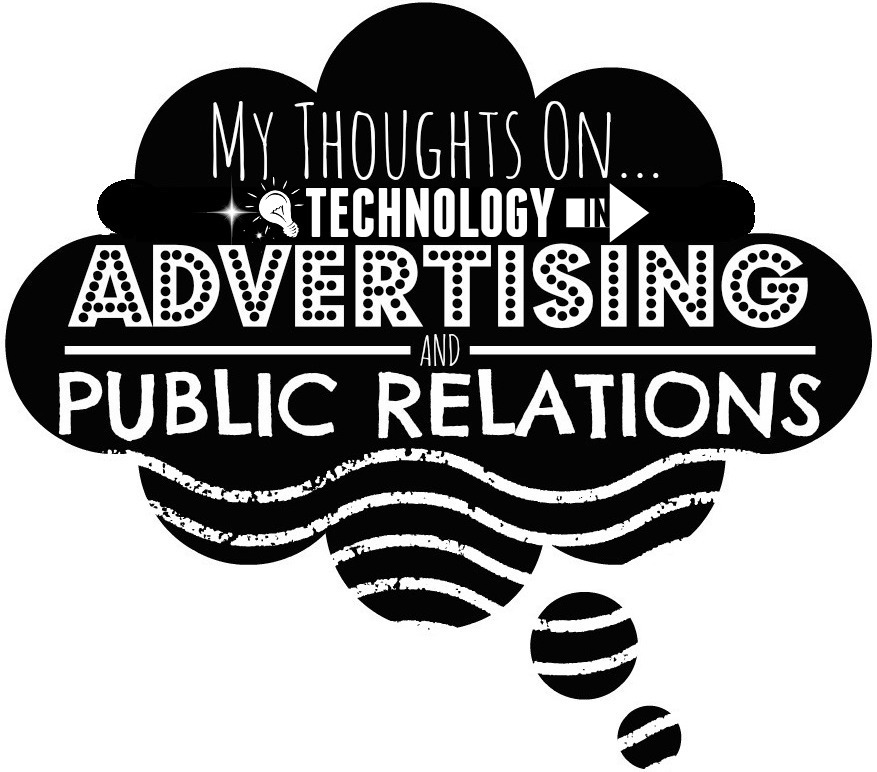Reflecting on Technology in Advertising and Public Relations

After taking CAP 105 at Grand Valley State University, I have some new thoughts on technology in advertising and public relations.
In My First Blog Post, I was asked to write about what technology in advertising and public relations means to me. After 16 weeks, I have learned quite a bit and my original perspective has transformed. Therefore, it is time to return to the origins of this blog and re-reflect on advertising, public relations and technology.
In my CAP 105 class at Grand Valley State University, we have completed projects that challenged us to experiment with social media, blogs, Microsoft Office, infographics, HTML, multimedia (Adobe Premiere Pro, Photoshop and Audition), social media management platforms (TweetDeck, Buffer and Hootsuite), analytics, Google AdWords and more. Each of the projects was unique and taught us to employ these tools in different settings.
I definitely appreciated the variety. It broadened my horizons and allowed me to get a glimpse of the bigger picture. Advertising and public relations professionals utilize technology every single day, and many of the programs we learned about in class are valuable tools in every marketer’s kit.
I thoroughly enjoyed the blogging project: it enabled me to cultivate new skills with WordPress and try my hand at branding and engaging a target audience. I also enjoyed the multimedia project, which gave me fun new opportunities to experiment with editing video, audio and photos, as well as a chance to practice event reporting. The most challenging project involved infographic design; it required adapting a completely new mindset to successfully communicate information visually. The project that taught me the most about a subject I knew the least about was the SEM Campaign that required the use of Google AdWords. Lastly, I found the tools I acquired from the social media management platforms project to be the most useful for the current advertising and public relations positions I hold.
It’s difficult to condense all that I learned this semester into one blog post, so I am going to attempt to briefly highlight three important points:
1. Technology is constantly evolving, so adaptability is key.
The roles of advertising and public relations professionals change and transform as time goes on. Media is constantly converging and developing and reinventing itself. Radio, television, newspaper, social media–these are just a few forms of media that are used for expressing ideas, and the way we communicate through them is never stagnant. Technology is the main force that pushes us forward: it is a catalyst for change. Much of what we learned in class may not have existed 10 years ago, and within the next 10 years the only thing that is certain is that things will continue to change. As an aspiring professional in an ever-evolving industry, it’s important for me to stay up on the new trends and movements. I need to constantly educate myself, expand my horizons and practice adaptability.
2. Anyone can be creative.
In advertising and public relations, one may focus on writing, graphic design, photography, video, audio, management, web design and most often a lot of everything! Though you may feel like you perform poorly in one area, there is probably another important area in which you excel. Therefore, you shouldn’t be discouraged and put yourself into the “I’m just not creative” box. Take time to experiment, explore and discover what you truly love doing. Additionally, often times the most “creative” campaigns are more a result of working hard, taking risks and trying interesting ideas than they are just random sparks of creative genius. Everyone is capable of creating. Be daring, ask questions and explore all of the possibilities.
3. As always, keep your target audience in mind.
Technology is exciting! Jumping into new movements and dabbling in the “next big thing” can be tons of fun and lead to fresh, innovative ideas. However, it’s fundamentally important to always keep your target audience in mind. How can you engage your audience? How can you create connections and develop relationships? What makes people interested in your organization, business or brand? These are important questions to keep in mind at all times, but especially when considering how to employ technology. If your audience primarily prefers detailed written work, you may want to stay away from infographics (unless you are trying to branch out and reach new audiences, of course!) If those you target tend to enjoy podcasts, perhaps you should invest more in audio recording. In the end, it boils down to being strategic. With technology, you have countless tools at your disposal, but you don’t need a hammer, screw driver and hot glue gun to paint a room– you need a paint brush. Invest in the proper tools you need for the challenge at hand to be the most effective and successful.
Overall, I appreciated the opportunity to not only learn about technology in advertising and public relations, but also to directly apply what I learned. I hope to continue utilizing the tools and knowledge that I have been equipped with in the years to come.
Adventure awaits.